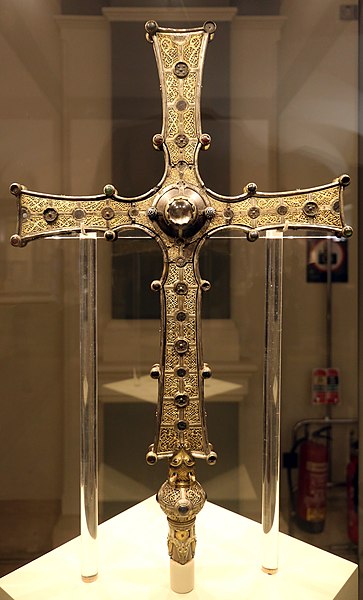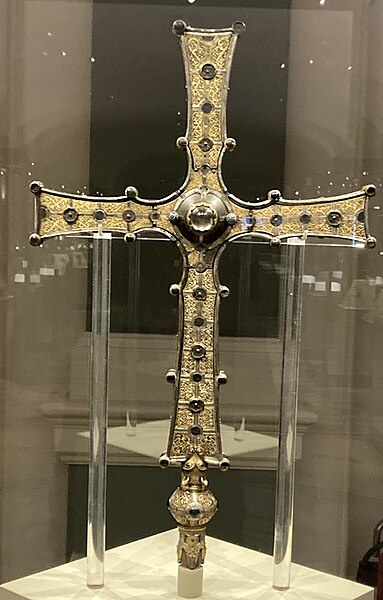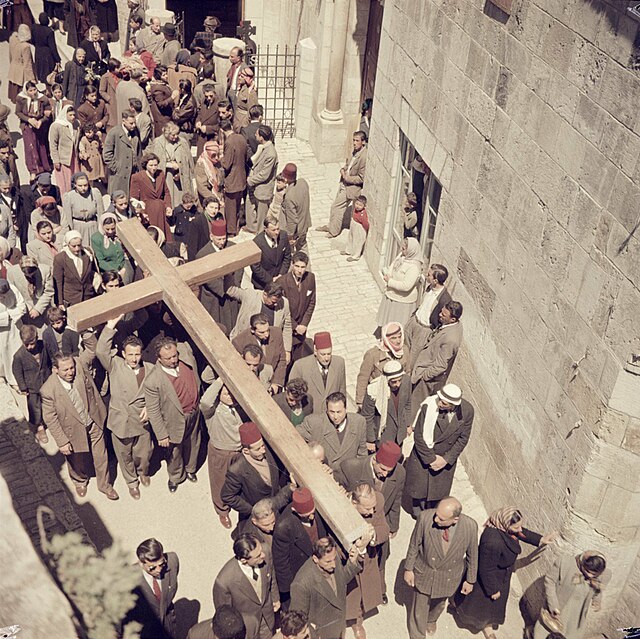The Cross of Cong is an early 12th-century Irish Christian ornamented cusped processional cross, which was, as an inscription says, made for Tairrdelbach Ua Conchobair, King of Connacht and High King of Ireland to donate to the Cathedral church of the period that was located at Tuam, County Galway, Ireland. The cross was subsequently moved to Cong Abbey at Cong, County Mayo, from which it takes its name.
The Cross of Cong
Reverse side of the cross
Upper panels
Central rock crystal
A processional cross is a crucifix or cross which is carried in Christian processions. Such crosses have a long history: the Gregorian mission of Saint Augustine of Canterbury to England carried one before them "like a standard", according to Bede. Other sources suggest that all churches were expected to possess one. They became detachable from their staffs, so that the earliest altar crosses were processional crosses placed on a stand at the end of the procession. In large churches the "crux gemmata", or richly jewelled cross in precious metal, was the preferred style. Notable early examples include the Cross of Justin II, Cross of Lothair, and Cross of Cong.
The Cross of Cong, Irish, 12th century
A processional cross carried during the entrance procession of a Catholic Mass
Russian Orthodox Crucession with lantern, processional cross and banners.
Pilgrims carrying the cross on the Via Dolorosa








